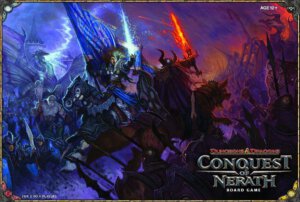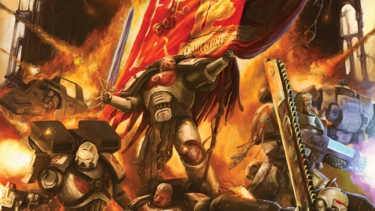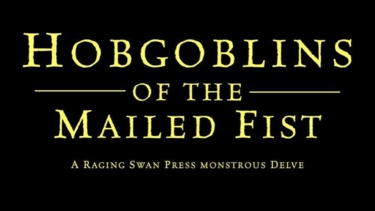
Publisher: Wizards of the Coast
Designers: Richard Baker, Mons Johnson, and Peter Lee
Artists: Wayne England, Adam Gillespie, and William O’Connor
Year: 2011
Players: Two to four players
Ages: 12+
Playing Time: Two to four hours
Genre: Dungeons & Dragons epic battles board game
MSRP: $79.99
Conquest of Nerath is a military battle game along the lines of Risk or Axis and Allies. It has its own differences that make it unique, and we will go over those. It boils down to individual taste, some will love the game and some will not. I will attempt to help you make that decision for yourself.
This is a game set in the Dungeons and Dragons Forgotten Realms universe. So it is a fantasy setting with monsters, heroes, and undead. The players pieces are divided among the territories on the board, and the players compete for control of the board. In the longest version of the game, the last player standing wins. It does take a 
The components of the game are excellent. The board and artwork are spectacular, and there are several hundred miniatures included in four different player colors. In addition to the ten different categories of pieces like the wizard, the castle, the siege weapon; there are several pieces that have different molds for each player. The foot soldiers, fighters, dragons, and monsters are unique for each player’s nation they represent. There are a handful of dice of different size in classic D&D style, unfortunately the game could have used a few more, especially the 20 siders as that is the die used by the dragons which are of course pretty popular. There is only one 20 sided die included.
There are also cards, tokens, and mini poker chips, and one player aid card for each player. The player aid cards could have used some more work. They could have been much more useful. You will find yourself referring to the rulebook quite often as you won’t have the info right in front of you where you need it. Purchasing new pieces for your army requires you to refer to the chart on the back of the rulebook quite often, so your best bet is to make a copy of this page and hand one out to each player. This is an oversight that should have been avoided.
Initial setup will take some time as there are a lot of pieces to place on the board, and it is easy to make mistakes. The bases of the figures have different shapes, to aid you in identifying which is which. For example, the foot soldiers all have square bases. This helps a lot. You will set up the board the same way each time you play.

This leads to one of my biggest problems with the game, and you will either like it or not. You can play either a free for all game with all players competing against each other, or an alliance game where two nations take on the other two nations. In a two player game this is easy, one player takes Karkoth and the Iron Circle while the other player takes Vailin and Nerath. In a three player game one player must play Vailin and Nerath while the other two players select other two nations. In a four player game each player has one nation.
So, all four nations MUST play each game, regardless of the number of players. Downtime is a problem in the three and four player games, but not any more than you would typically run across playing Risk. To me the sweet spot is two players, but you are controlling and keeping track of two separate nations, so it is easy to forget to use the cards you have for each nation. The four player game is not bad as you each control a nation, but the downtime between turns can get a little tiresome. The three player game I did not enjoy as one player is controlling two nations, so they are taking twice the amount of turns as the other players, and they have a longer wait between their turns.
There are those who will not mind the downtime, especially the strategic players who like to keep an eye on the other player’s actions. This helps to eliminate the long wait, and keeps you involved, and makes for an enjoyable game. If you have these types of players, I think you will have a great time playing Conquest of Nerath.

Each piece has its own die that it rolls to attack, and a roll of six or higher is a hit. So a foot soldier will roll a six sider, a fighter rolls a ten sider and the dragon gets to roll a 20 sider, etc. If you have problems remembering which die to roll for each unit, just look at the base. Most of the units have bases shaped like one side of the die you roll. So a foot soldier has a square base, so you would roll a six sider, and so on. Wizards have first strike, but otherwise combat is simultaneous. Each piece can take one hit, except for the dragons which can take two. You simply flip it upside down to indicate that it has been damaged.
The battle continues until either the attacker retreats or one side or the other is eliminated. If the attacker wins they earn a victory point and place a conquest token on the space. This is now their territory, and will remain so until retaken by another player. Even if they lose the territory, the victory point still counts for the original attacker.
There are cards, a separate deck for each player, which is pretty cool. These have effects like providing bonuses during battle or providing extra pieces to place on the board.
You also earn an income of one gold per territory you control on your turn. This gold can be spent to purchase additional units to add to your army as it sweeps a path of destruction across the landscape. There are a lot of figures included, but it would have been nice if a few more dragons and castles were provided as there aren’t enough.

Aside from the battles, there are also dungeons marked on the map. These are territories that have a special door shaped token placed on them. A player can send his fighters and wizards into these territories to face the dungeon guardian. You flip over the token and the reverse side lists the monster(s) guarding the dungeon. You fight a battle against the guardian and if you survive you get to claim a treasure card. The treasure cards can come in pretty handy, and provide a much needed victory point boost. Be warned, the monsters in the dungeon can be pretty tough, and you are better off sending in several heroes rather than one or two.
To break it down, during each turn a player needs to draw a card, move their pieces, fight their battles, purchase and move new units, and collect their income. Player turn order is pre-determined depending on which nation you are playing, and is the same in every game.
If you are looking for a ramped up fantasy Risk or Axis and Allies type conquest game, with a lot of D&D flair, then this is the game for you. If the annoyances I mentioned are too much for you, then you might want to think twice.
- A Dungeon Delve for Kids?: A Review of Dungeon! - Oct 24, 2022
- Better, Stronger, Faster | Descent: Journeys in the Dark Second Edition Reviewed - Oct 23, 2022
- Your Planet is Doomed!: Invasion from Outer Space Reviewed - Oct 22, 2022












